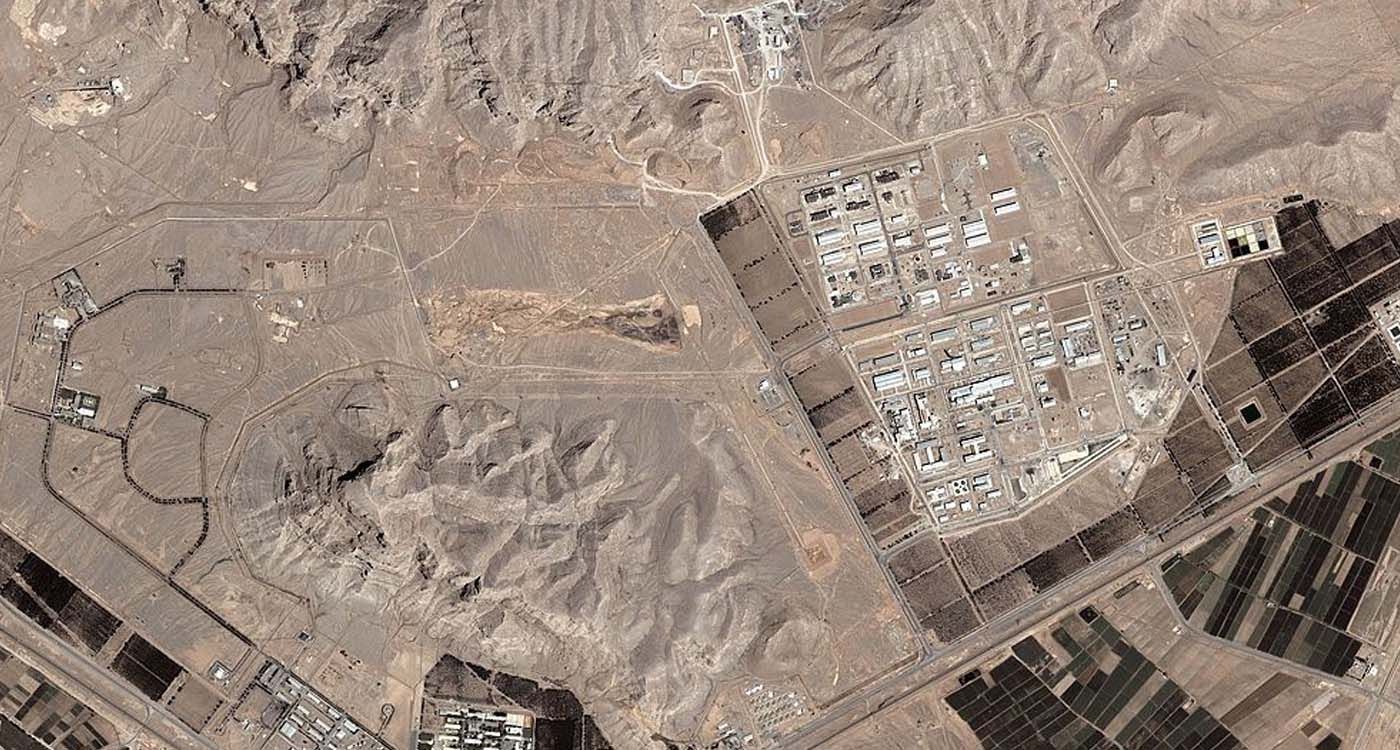- Home
- Arab World
- What Would Actually Set Off a Nuclear Disaster

Satellite photo of Iran's Arak nuclear site. ©Satellite image ©2025 Maxar Technologies / AFP
Since the Israeli strikes on Iran’s Natanz nuclear site on June 13, one question has taken on new urgency: What exactly needs to be hit in a nuclear facility to trigger a radioactive or chemical leak? And more critically, did the recent strikes come dangerously close to that threshold?
To assess the risk, we first need to understand what a nuclear facility is, and what Iran’s nuclear infrastructure actually consists of.
Most of Iran’s nuclear sites are not power plants. In fact, Bushehr is the only operational nuclear power station in the country, the sole facility currently generating electricity from nuclear energy and feeding it into the national grid.
The others, Natanz, Fordow, Arak and Isfahan are technical sites with distinct functions. Natanz and Fordow are dedicated to enriching uranium, Isfahan handles the conversion of nuclear materials and Arak houses a heavy-water reactor that has yet to become operational. These are not energy-producing plants, but components of a wider program focused on enrichment, processing and research.
How Iran’s Nuclear Program Works and Where It Could Go Wrong
Conversion
The nuclear cycle begins with conversion. Once mined, uranium is processed into a concentrated powder known as yellowcake. This is then converted into a gas, uranium hexafluoride (UF₆) used in the next phase: enrichment. In Iran, this step primarily takes place at the Isfahan facility.
Enrichment
Enrichment increases the proportion of uranium-235, the only isotope capable of sustaining a nuclear chain reaction. This is done using centrifuges, like those operating at Natanz and Fordow. The higher the enrichment level, the closer the material comes to weapons-grade. Iran is currently enriching uranium to 60% purity, an alarmingly close step to the 90% threshold required for a nuclear weapon.
Generation of Electricity
The generation of electricity is carried out by conventional nuclear power plants like Bushehr. In these reactors, enriched uranium acts as fuel. The heat released by nuclear fission heats water, producing steam that turns turbines to generate electricity. Currently, Bushehr is Iran’s only operational nuclear power station.
At sites such as Natanz, thousands of centrifuges rapidly spin to separate uranium isotopes. This process uses uranium hexafluoride gas (UF₆), which is highly toxic. If leaked, UF₆ reacts with moisture in the air to form hydrofluoric acid, a corrosive substance capable of causing severe damage to the respiratory system and human tissue.
Sensitive Zones Within a Nuclear Site
Certain areas within a nuclear site are especially vulnerable. The reactor core, found only in active power plants like Bushehr, contains irradiated fuel, and a direct strike there could release radioactive material into the atmosphere. The centrifuge cascades, such as those at Natanz and Fordow, are also critical, as damage could release UF₆ or other hazardous chemicals. Finally, containment and ventilation systems serve as crucial barriers, even an indirect strike disabling these could provoke an internal leak.
A Catastrophe on the Scale of Chernobyl?
The International Atomic Energy Agency (IAEA) has confirmed that Israeli strikes on Natanz damaged only surface-level infrastructure, with no radioactive leaks detected beyond the site. However, experts warn that the risks escalate with every attack, especially if future strikes lose precision or target more sensitive facilities like Fordow, buried deep underground, or Bushehr, which contains active nuclear fuel.
Alexei Likhachev, CEO of Russia’s state nuclear corporation Rosatom, has cautioned that an attack on the Bushehr nuclear power plant could trigger a disaster comparable to Chernobyl. “If the plant’s first operational power unit is hit, we could face a catastrophe on the scale of Chernobyl,” he told Russian state news agency RIA.
Chernobyl remains the world’s worst nuclear disaster. In 1986, a reactor exploded at the plant in Soviet Ukraine, and UN agencies estimate that some 4,000 people have died from radiation exposure since.
A Danger Too Severe to Overlook
Striking a nuclear site alone does not guarantee a catastrophe, but damaging critical components, or repeated attacks on sensitive areas, could turn a military conflict into an environmental disaster. In a densely populated region like the Middle East, the fallout would not stop at Iran’s borders.
Read more





Comments